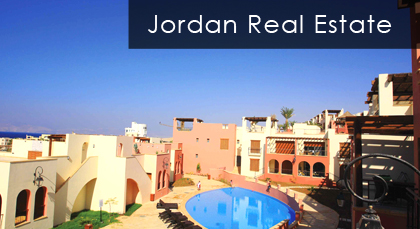Jordan Construction Sector Analysis 2011
Positive growth in construction activity along declining government infrastructure spending.
 Positive growth in construction activity along eclining government infrastructure spending. The construction sector in Jordan witnessed positive growth since the start of the year, after registering a drop in its activity level over the past year. In parallel, the property market was relatively demanded in the early months of 2011, with a 41% growth in property turnover and a 24% rise in real estate sales (37% for apartments and 21% for land sales) over the first four months of
Positive growth in construction activity along eclining government infrastructure spending. The construction sector in Jordan witnessed positive growth since the start of the year, after registering a drop in its activity level over the past year. In parallel, the property market was relatively demanded in the early months of 2011, with a 41% growth in property turnover and a 24% rise in real estate sales (37% for apartments and 21% for land sales) over the first four months of
Among large real estate projects is the US$ 10 billion Marsa Zayed project in the city of Aqaba
2011 relative to the corresponding 2010 period. The decline in government capital expenditures for 2011 would yet adversely affect the sector’s activity, noting that the slowdown in infrastructure and non-residential projects last year was partly attributed to the meager financial allocations in the government’s budget for capital spending.
While cement production posted a decline of 15.1% in the first three months of the year, totaling 798,000 tons, the number of building permits increased by 24.3% year-on-year and reached 6,967 in the first quarter of 2011. The area relative to new construction permits also increased by 28.0% year-on-year to reach 3,426 thousands square meters. Banks’ credit for construction reached US$ 4.6 billion at end-March 2011, up by 6.3% relative to end-March 2010. Jordanian banks had a more pro-active approach since the beginning of the year, with some approaching developers directly to offer products and services aimed at attracting more buyers and stimulating market activity.
Among large real estate projects is the US$ 10 billion Marsa Zayed project in the city of Aqaba, which is the largest real estate and tourism development of its kind in Jordan stretching over an area of 3.2 million square meters with a 2 kilometers waterfront. The development has been designed as a mega mixed-use waterfront project, which would offer premium residential villas, townhouses, apartment units and hotels rooms as well as business, leisure and tourism facilities.
The first phase of the Marsa Zayed project, developed by the Al Maabar company, is underway and construction works are expected to be completed in 2014. In addition, Al Maabar recently announced partnership in Jordan with Starwood Hotels & Resorts Worldwide, Inc. to start the St Regis in Amman and the Residences at the St Regis Amman. The St Regis Amman is scheduled to open in 2014 and would feature 270 rooms and suites, while the Residences at the St Regis Amman would provide 80 private luxury residences for purchase featuring two, three, four and five bedrooms.
On the other hand, Damac Properties, a large developer in the MENA region, awarded the main construction contracts for the completion of its projects situated at the gateway to the Abdali master plan in Amman. Damac Properties’ projects include the Heights, a luxury 35-storey residential tower, the Courtyard, a residential property with an open-air rooftop terrace, and the Lofts at the Heights, an executive residence.
It is worth recalling that the Jordanian government moved swiftly in adopting policy changes to protect the real estate sector including limitations on price increases and the waiving of transfer fees. Outlook for the sector in the remaining months of 2011 would undeniably depend on the consecutive outcome of domestic political and regional political milestones with what this would entail in terms of spillover effects on investor confidence over the foreseeable future.
The article above has been published as a part of Bank Audi`s The Jordan Economic Report, May 2011. It can be accessed via the internet at the following web address: http://www.banqueaudi.com.